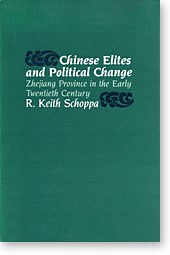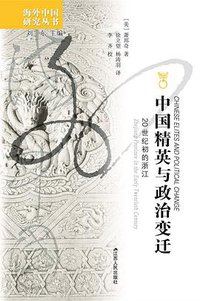Chinese Elites and Political Change
豆瓣
Zheijang Province in the Early Twentieth Century
R. Keith Schoppa
简介
With the Qing Dynasty reform efforts (1901–1911), abolition of the civil service examination (1905), and the end of the monarchy (1912), the first three decades of the twentieth century brought important changes to the elite of Zhejiang Province. This book examines the social backgrounds, public activities, careers, and decision-making of local and provincial elites—that is, nonprofessional men who had taken on public duties when the multiplying problems of government had resulted in a general breakdown of public functions.
While elites in early twentieth-century China have often been caricatured as militarists, corrupt bureaucrats, evil landlords, and ineffectual reformers, they have not been clearly understood or closely analyzed. Since the seventeenth century, elites had been assuming increasing responsibility for funding and managing public projects, and by the twentieth century had expanded their activities still further. In the first three decades of the century, they experienced substantial personal and communitarian development; it was the structures and processes developed by these elites that subsequent regimes—Guomindang, Japanese, or Communist—had to build upon and adapt.
Keith Schoppa divides the counties of Zhejiang Province into four zones according to level of political and economic development and scrupulously analyzes the complex processes of remolding society at the local and provincial levels. By delving beneath the heroic figures and large movements of Chinese political life in this century, he reveals the common factors that make China a part of the worldwide story of reconstruction, reform, and developmental change.
contents
I. The Context of Elite Activity
1. Elites and Political Development: The Historical Context
2. The Four Zhejiangs
3. Common Organizations in the Four Zhejiangs
II. The Sociopolitical Ecology of the Four Zhejiangs
4. Inner-Core Elite Career Bases and Patterns
5. Inner-Core Elite Collectivities: Social Groupings and Voluntary Associations
6. Inner-Core Elites and Political Decision Making
7. Outer-Core Political and Elite Structures
8. Inner-Periphery Political and Elite Structures
9. Outer-Periphery Political and Elite Structures
III. Locality, Province, and Nation in Early-Twentieth-Century Politics
10. The 1911 Revolution
11. Patterns of Nonofficial Elite Provincial Politics: Assemblies, Factions, and Coalitions
12. The Emergence of Outer-Zone Elites in Provincial Politics: The Jin-Qu-Yan-Chu Association, Political Ideals, and the Guomindang Victory
Conclusion
Appendix A. The Units of Analysis
Appendix B. Data for County Classification
Appendix C. Methodological and Source-Related Problems
Abbreviations Used in the Notes
Notes
Bibliography
Glossary
Index
